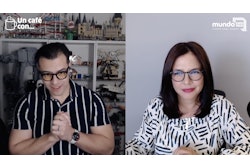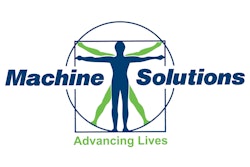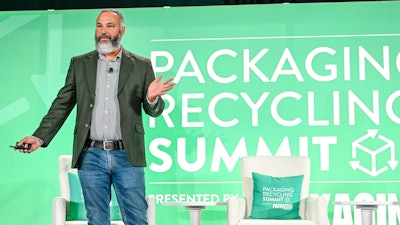
One company that has bared all (of its proprietary R&D) in the name of greater sustainability for all brands is Google and its consumer hardware team with the launch of its “Plastic-Free Packaging Design Guide.”
As David Bourne, lead for environmental strategy at Google explained during Packaging World’s recent Packaging Recycling Summit, in October 2020, Google made a commitment to eliminate all plastic from its packaging by 2023. Last year, it achieved its goal, unveiling its Pixel 8 smartphone in a 100% plastic-free, 100% recyclable package. Since then, all the products it has launched have been in similarly plastic-free packaging.
 | Read this related article, “Pentel Reimagines Blister Packs as Plastic-Free” |
In 2020, when Google announced its ambitious commitment, 94% of its packaging was fiber-based. But the challenge to get to 100% plastic-free was still significant. “As it turns out, that last 6% is full of a lot of really thorny and difficult areas of packaging where developing the fiber-based alternative with equal performance is really tough—so polypropylene lamination, shrink-wrap, hang tags, a long list of elements of our packaging for consumer electronics that had to be replaced with a viable fiber-based alternative,” said Bourne. “But we did it.”
Upon reaching its goal, Google unveiled a downloadable, 95-page guide on its website that details its plastic-free journey. The guide shares specifics on fiber-based alternatives for every plastic component, including coating solutions, shrink wrap, closure labels, paper tapes, hang tabs, protective product wraps, and in-box trays as well as information on its material suppliers.
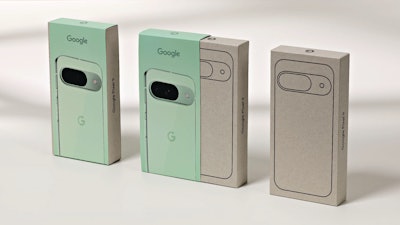 In 2024, Google rolled out a new version of its 100% plastic-free packaging, with a new speckled paper solution.
In 2024, Google rolled out a new version of its 100% plastic-free packaging, with a new speckled paper solution.
“That sounds a little counterintuitive because why would we want to enable our competitors? But really, when we think about sustainability, we think it’s a space to be collaborative and not competitive,” explained Bourne. “It’s not Google’s core competency to be about sustainability, and for many companies, it’s not their core competency either. We believe that by collaborating on sustainability, we can all enable the goals we collectively have and still have plenty of competition in other areas.”
Providing a glimpse at some of the R&D challenges, Miguel Arevalo, packaging innovation lead for Google, shared that ensuring the protection of Google’s expensive electronics was paramount; the new packaging had to match the performance of plastic in terms of protection, scratching, and dust resistance. Additionally, it needed to present the product attractively while being intuitively recyclable.
After the original plastic-free package and guide were launched in 2023, Google introduced an enhanced packaging design and an updated guide this past summer. “The intention of this new design was to try to push a little bit further, to enable an iconic look of what Google is, and try to get away from the white box that we used to have before,” said Arevalo. “But the main feature we enabled was the creation of a new paper solution.”
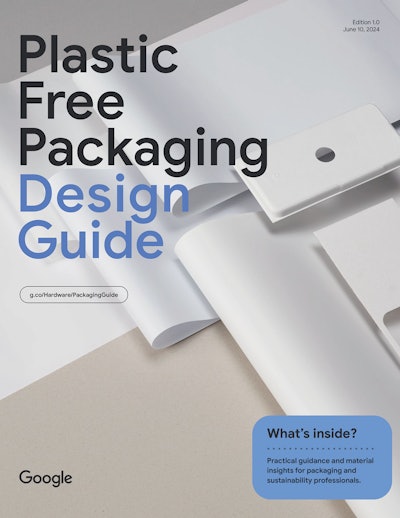 Google has made its Plastic-Free Packaging Design Guide available to all brands.
Google has made its Plastic-Free Packaging Design Guide available to all brands.
Changing from a pure white to a speckled fiber is also helping communicate the package’s recyclability to both consumers and MRFs. “We think the best consumer education you can do is in the design itself and the experience of recycling and what the packaging intuitively communicates about itself to you,” said Bourne. “And we’re hopeful the studies we’ll be doing on this new packaging design will bear that out.” PW

